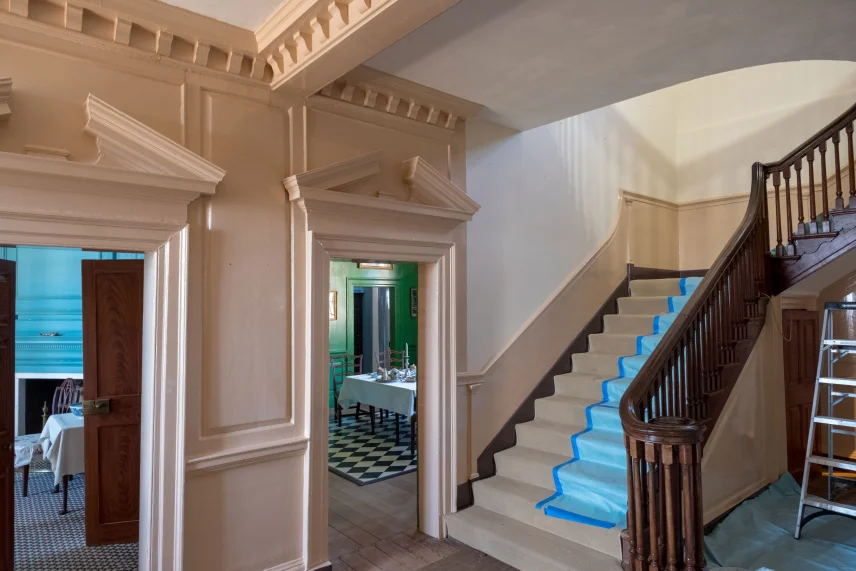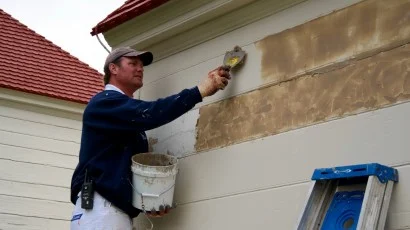During the Mansion’s two-week closure for preservation work, Mount Vernon’s architectural staff began a transformative restoration of the central passage. Upon reopening, the team unveiled a new look for the central passage, replacing the dark, wood-grained finish of the panel walls with a fresh coat of paint in a color known as “stone” in the 18th century.
 Mount Vernon’s preservation efforts aim to re-create the appearance of the estate as it looked in 1799, the last year of George Washington’s life and the effective culmination of his vision for his home. Since 1981, the yellow pine paneling has been faux painted to look like mahogany, a technique called “graining.” However, recent microscopic paint analysis, which examines the layers of paint used throughout history, determined that this “graining” finish wasn’t used until well after Washington’s death. Instead, in 1799 the walls were painted “stone,” a highly fashionable color meant to accent the rich wood of the black walnut staircase. Although we use traditional linseed oil paints in all our restorations, along the Mansion visitor path, where we need to do frequent touch ups, we use Fine Paints of Europe oil paints, which wears very well. Fine Paints very kindly donated the paint we used in the passage and along the visitor path. The new paint has the high luster desired in 18th-century architectural finishes, but which toned down as the paint cured; this process will take several months.
Mount Vernon’s preservation efforts aim to re-create the appearance of the estate as it looked in 1799, the last year of George Washington’s life and the effective culmination of his vision for his home. Since 1981, the yellow pine paneling has been faux painted to look like mahogany, a technique called “graining.” However, recent microscopic paint analysis, which examines the layers of paint used throughout history, determined that this “graining” finish wasn’t used until well after Washington’s death. Instead, in 1799 the walls were painted “stone,” a highly fashionable color meant to accent the rich wood of the black walnut staircase. Although we use traditional linseed oil paints in all our restorations, along the Mansion visitor path, where we need to do frequent touch ups, we use Fine Paints of Europe oil paints, which wears very well. Fine Paints very kindly donated the paint we used in the passage and along the visitor path. The new paint has the high luster desired in 18th-century architectural finishes, but which toned down as the paint cured; this process will take several months.


Next Steps
The Historic Preservation and Collections team will continue work on the central passage restoration throughout 2018. The reproduction and installation of wallpaper will be accompanied by conservation of the original lantern and Bastille key case and a more accurate representation of the space’s original furnishings.
In 2023, after the work of cellar restoration and fire suppression installation is complete, the preservation team will return to the passage to undertake conservation of the paneling, and installation of a hand-made reproduction of the east door.
The Connoisseur Society and an anonymous donor have generously agreed to be lead sponsors for this exciting project.

